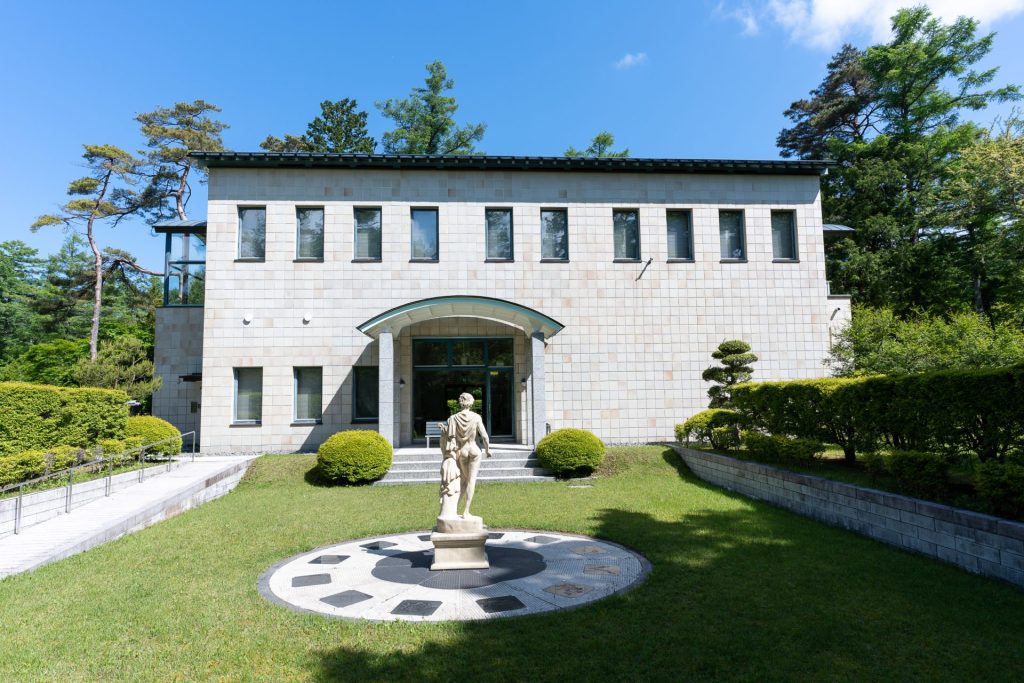Two hours from Shinjuku by train. Fuji Station in Yamanashi Prefecture. As the name suggests, the moment you get off the train, you are immediately struck by the majestic Mt. Fuji, and the whole area is full of souvenir stores, restaurants, and other stores that advertise the active volcano that is the pride of Japan. However, today’s goal was something else.
After 25 minutes on the Fujikyu bus, we left the city center and entered the forest. Then, a large lake suddenly appears on the left.
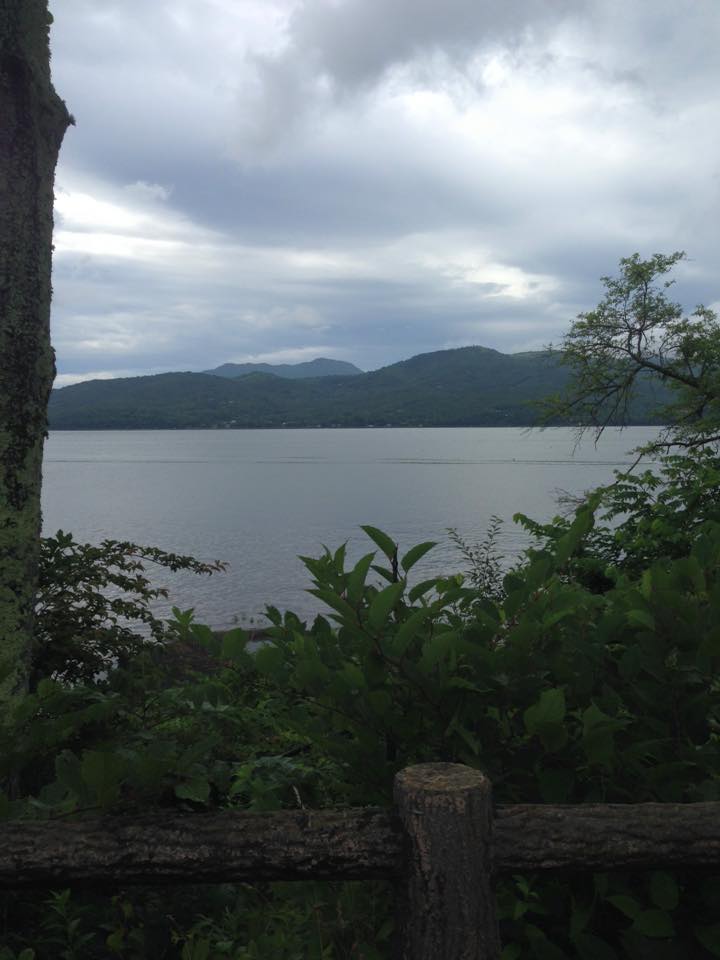
In the meantime, the bus stops with the announcement “in front of the Forest of Literature Park” and gets off at a road between the forest and the lake. With its back to the lake, the bus continued onward through the forest. The road is paved, but there are no structures around. The only sound is the sound of leaves crunching on the ground, and just as we are getting a little nervous, we finally see a beautiful building, about the size of a large house. That is the Yukio Mishima Literature Museum, our destination this time.
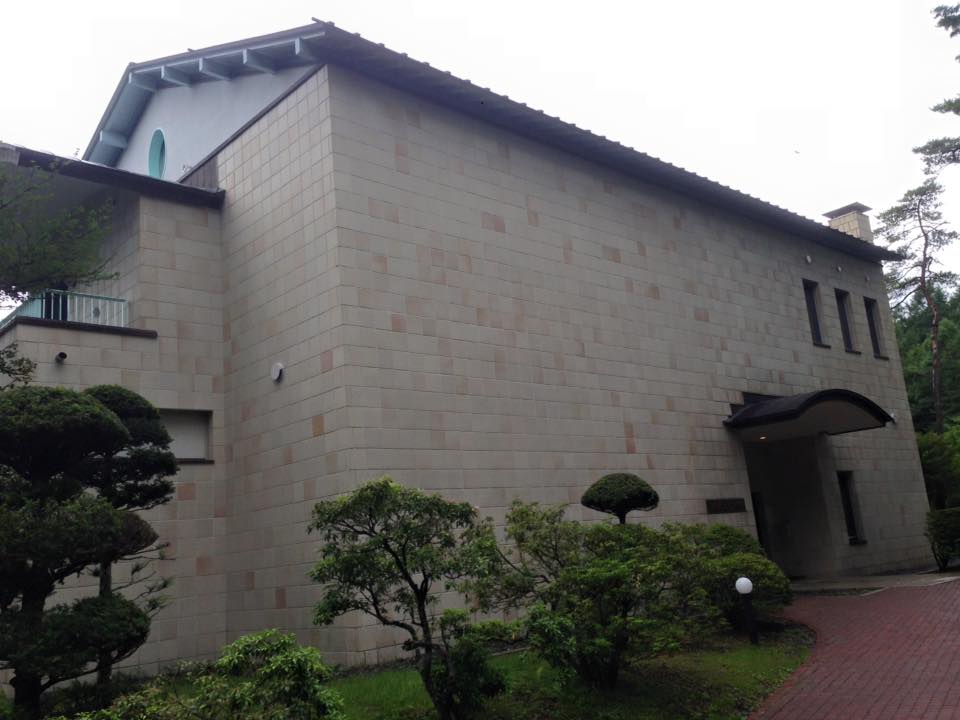
Yukio Mishima Memorial Museum Quick Introduction

The museum is located in Yamanakako Bungaku no Mori (Literature Forest) Park in Yamanakako-mura Hirano, Minamitsuru-gun, Yamanashi Prefecture. The museum opened on July 3, 1999 (Heisei 11) as the only museum of Yukio Mishima’s literature. The museum was established based on the basic principle of research and dissemination of Mishima’s literature, in line with the wishes of Mishima’s bereaved family to preserve and use Mishima’s materials in a public institution and the concept of constructing the Lake Yamanakako Bungaku no Mori Park.
The museum houses and exhibits all of Yukio Mishima’s first editions, manuscripts, creative writing and interview notes, handwritten materials, paintings, letters, portrait photographs, books, research books, translations, first publications, and film and theater materials, some of which are on display. The museum also introduces photographs and explanations of the materials using video and a computer for searching, offering a glimpse into Mishima’s life and literature.
Library Guide
・99 first editions
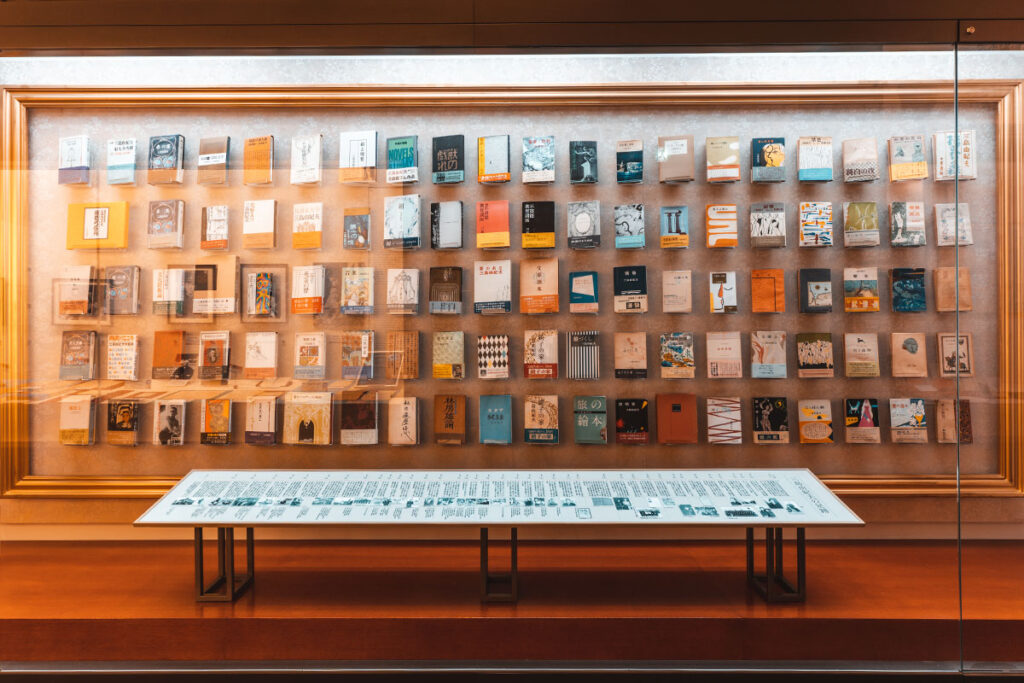
The exhibition features 99 books (first editions) from his first publication, “Hanazakari no Mori” to his last, “Ranryo”, as well as a brief chronology with photographs.
By displaying all of Mishima’s first editions in one place, the exhibition visually introduces the variety of his works. In addition, a brief chronology of Mishima’s life and works is also on display, allowing visitors to compare and contrast these items and trace Mishima’s life and works.
・Teenage–From Kimitake Hiraoka to Yukio Mishima
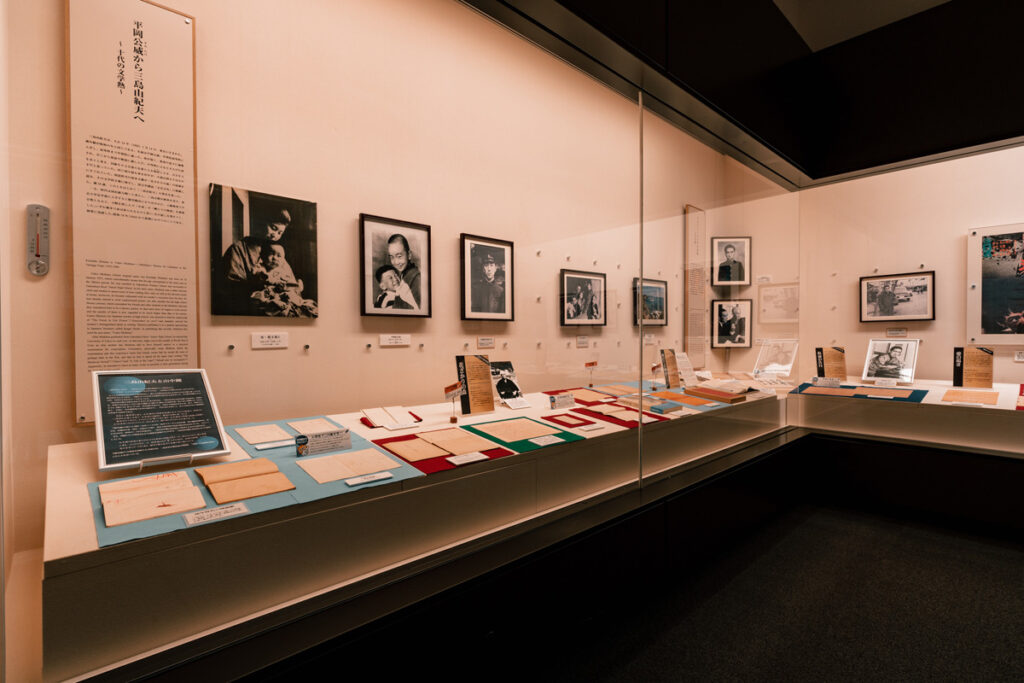
The exhibition features handwritten materials from the period of his early works from Gakushuin Elementary School to his days at Tokyo Imperial University.
Yukio Mishima was born in 1925, and his childhood coincided with the Pacific War. Mishima himself was prepared to lose his life in the war and devoted himself to writing in order to leave a legacy of his life. The exhibition focuses on materials from the period when he began using the pen name “Mishima Yukio”, which was given to him by his Japanese language teacher at Gakushuin, Fumio Shimizu, when “Hanazakari no Mori” was published in the literary coterie magazine Bungei Bunka (Literary Culture).
The museum has many of Mishima’s writings from his teenage years, many of which were written in his youth, but the fact that many of his works were unpublished during his student years was first made known to the public through the materials in this museum. The preserved materials from Mishima’s teenage years include novels, essays, critiques, poems, plays, letters, creative notes, and other valuable materials, as well as drawings he made as a child (ages 5 and 6).
・20s–Blossomed into a professional writer
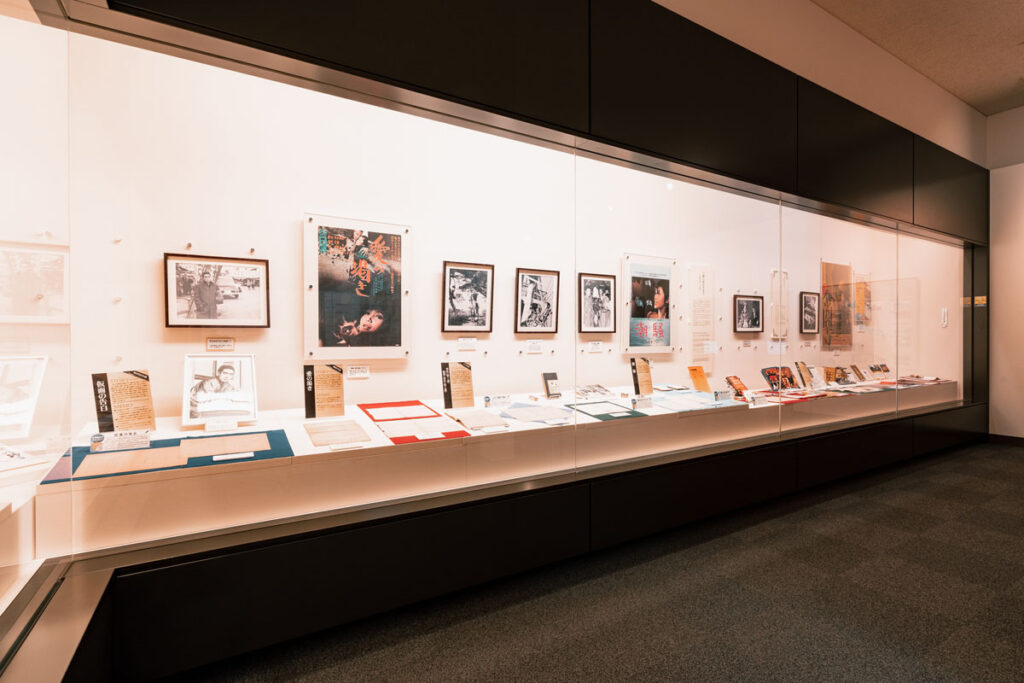
The exhibition features materials (handwritten manuscripts, creative notebooks, portrait photographs, books, magazines in which he first appeared, movie posters, etc.) from the postwar period when he was in his 20s and establishing himself as a professional writer.
From the period when Kawabata Yasunari allowed him to publish short stories (such as “Cigarette”) in his magazine “Ningen,” which he presided over, to the time when he wrote his first full-length story “The Thief,” resigned from the Ministry of Finance, made his debut in the literary world with “Masked Confession,” published “Thirst for Love,” “Blue Age,” and “Forbidden Color,” and after his trip around the world (“Apollo’s Cup”), published “Tidal Wave The exhibition focuses on materials from the period when he became famous as a writer, such as the publication of “The Cup of Apollo” after his round-the-world trip.
・30s–Expanding activities
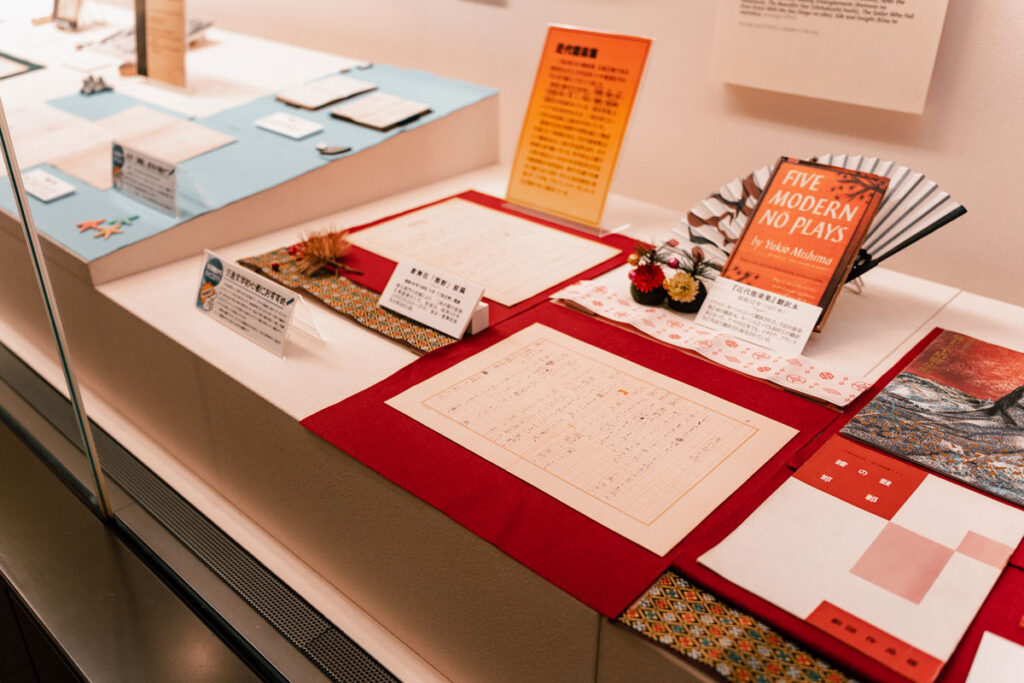
The exhibition features materials (manuscripts, notebooks, portraits, stage photographs, books, first published magazines, film and theater scenarios, programs, posters, etc.) from his 30s, when his creative activities were broadly flourishing.
The exhibition focuses on materials from the period when he was actively publishing novels such as “Kinkakuji,” “Virtue no Yoromeko,” “Kagamiko no Ie,” “Banquet no Ato,” “Melancholy,” “Beast’s Play,” “Beautiful Stars,” “Afternoon Tug,” “Silk and Light,” and plays such as “Modern Noh Play Collection” and “Rikanekan. In addition, materials related to his non-literary activities such as bodybuilding, boxing, kendo, starring in the movie “Karakaze Yaro” and modeling for photographs (“Rosasenga”) are also on display.
・40s–The challenge of becoming both a literary and martial artist
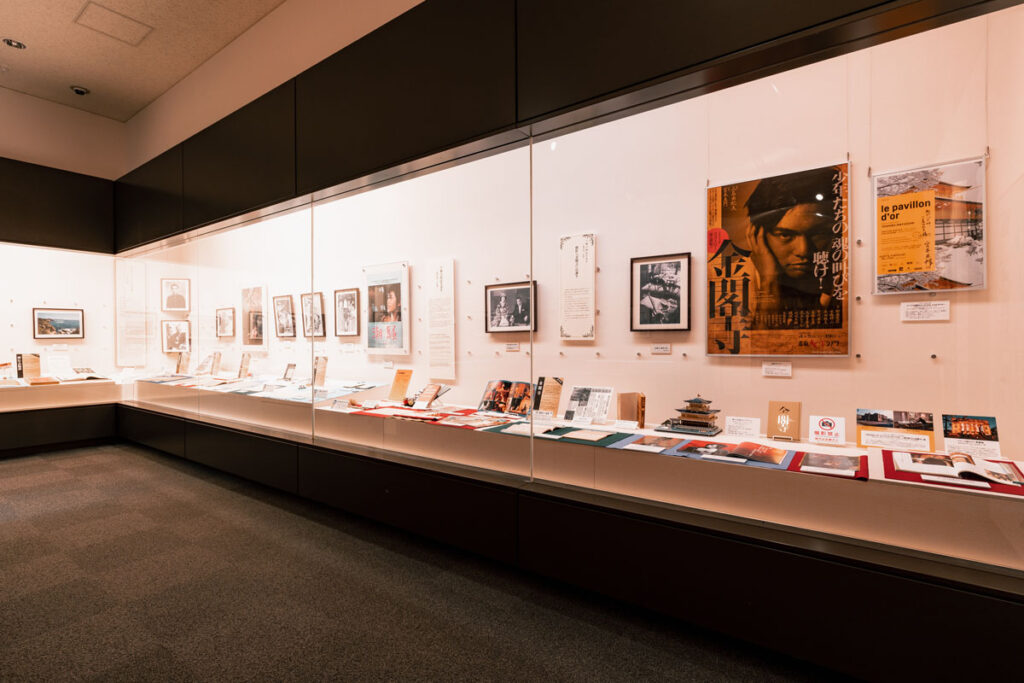
The exhibition features materials from his 40s, from the time when he began writing his major feature-length work “The Sea of Fertility” to his suicide.
The exhibits include the four parts of “The Sea of Fertility” (“Spring Snow,” “Bamba,” “The Temple of Dawn,” and “The Five Fates of Man”), which was his last full-length work; materials related to his plays “The Marquise de Sade,” “The Fall of the Suzaku Family,” and “My Friend Hitler”; manuscripts of his lectures in the United States, notes and memos, and manuscripts published in “The Times,” and other materials from the period when he was a Nobel Prize candidate to his last work. The exhibition displays materials from the time he was nominated for the Nobel Prize in Literature to the time of his death.
Mishima and Lake Yamanaka
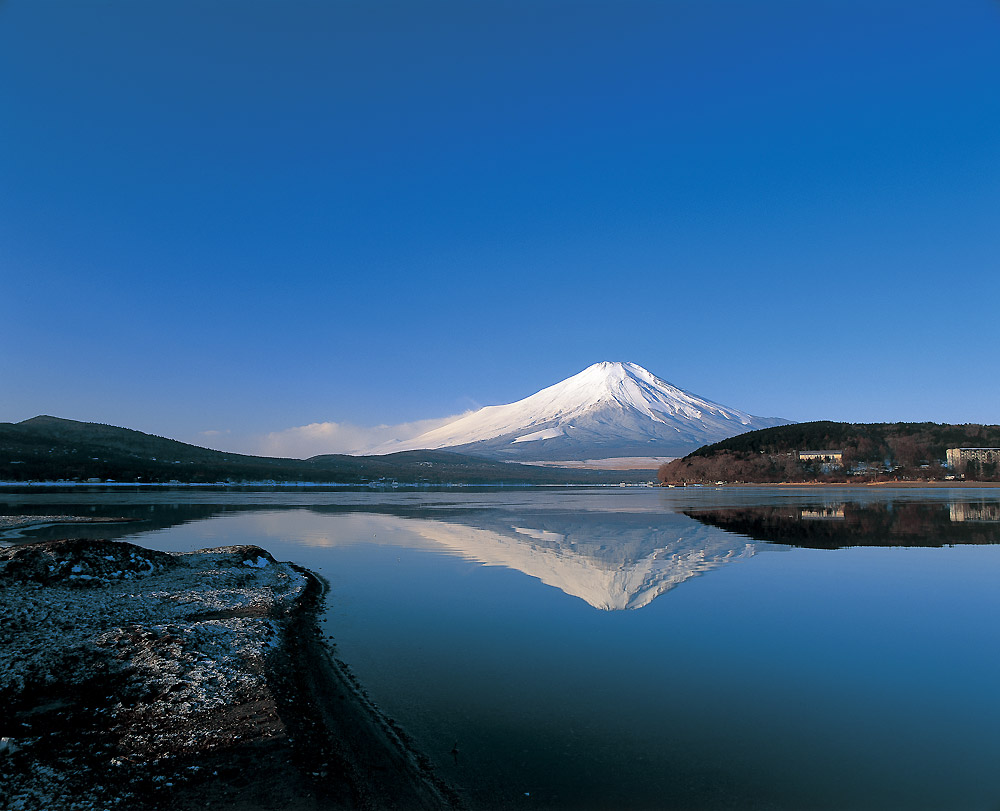
Although there is no strong connection between Mishima and Lake Yamanaka, he trained to traverse the mountains in the vicinity of Lake Yamanaka as part of his Self Defense Force enlistment, and the lake appears in his novels “Temple of Dawn (Sea of Fertility, Volume 3),” “The King of Lanryo,” “Love and Separation,” and “The Butterfly. In the “Temple of Dawn,” Mishima drew a map of the Lake Yamanaka area, which includes Mt. Fuji, the old Kamakura-Oukan (now Route 138), the Kitafuji Training Area, and the names of the surrounding places.
Conclusion
As a Mishima fan, I have visited the Mishima Literature Museum only once in the past several years, but as I look back on the occasion of writing this blog, I can recall as if it were only yesterday the scenes I saw that day, such as the tidal wave at the bus stop, the smell of the forest, and the elegant exterior walls of the building. The scenery of this literary museum, which stands quietly in the forest and wears a sense of desolation, seems somewhat out of touch with the image of the man who met a scandalous and passionate end.
Although the building stands on a hill, the lake cannot be seen from there.
However, when I went out into the garden and listened carefully, I thought I could hear a rustling sound like a “zazahn…”. Is this an auditory hallucination? Or is it just my romantic temperament rising when I see the original manuscripts and memorabilia of the writers I admire so much?
Come to think of it, in Mishima’s last work, “The Sea of Fertility,” there is a scene in which the protagonist Isao Iinuma commits murder out of a sense of justice, and as payment for it, commits seppuku (ritual suicide) on a hilltop at night. The sun has completely set, but he is so proud of the purity of his deed that he transcends reality. Mishima concluded his final scene with this very moment, the moment he himself committed seppuku with his sword.
At the exact moment he thrust the sword into his belly, the sun shone brilliantly behind his eyelids.
In the garden of the museum stands a statue of Apollo, a replica of the one in Mishima’s residence. If you look closely at the statue, you can see a crack running from the center of the statue’s abdomen to the right, as if Mishima had slit his stomach in the same manner. According to the staff of the museum, there were no cracks when the statue was installed, and the cracks gradually spread from the center.
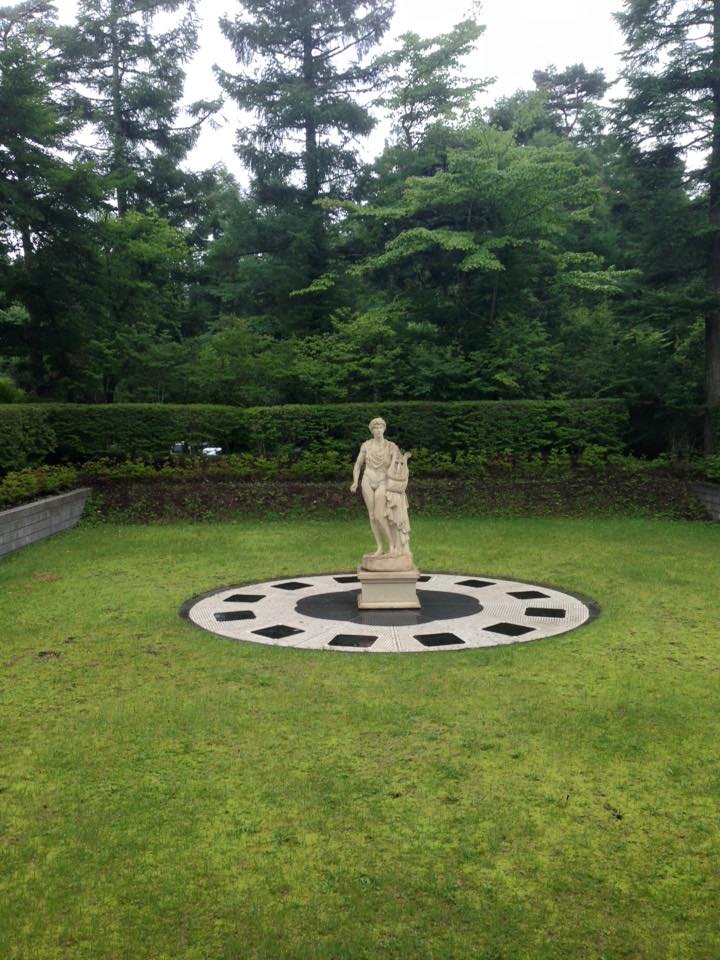
Hours of Operation
The museum is open from 10:00 a.m. to 4:30 p.m. (admission until 4:00 p.m.).
Closed: Mondays and Tuesdays (or the following day if the day falls on a national holiday), December 29-January 3, and on the days when materials are checked (irregular).
However, during Golden Week (April 28-May 6), the museum is open on Mondays and Tuesdays.
Admission Fee
Adults ¥500 (group ¥450, disabled ¥250) 250 yen for the handicapped.)
High school and college students: 300 yen (Groups: 250 yen. Disabled: 150 yen)
Elementary and junior high school students 100 yen (Groups 50 yen. 50 yen for disabled persons.)
Free admission for elementary school students and younger.
Group discounts are available for groups of 10 or more. Disabled persons receive a discount upon presentation of a disabled person’s identification card.
Access
・Highway Bus: Take Chuo Highway Bus from Basta Shinjuku to Yamanakako Asahigaoka Bus Stop. 15 minutes on foot.
Local bus: 25 minutes from Fuji Station or 40 minutes from Gotemba Station. 5 min. walk from Bungaku no Mori Koen-mae bus stop.
・By train
From JR Shinjuku Station, transfer at Otsuki Station on the Chuo Honsen Line to the Fujikyuko Line of Fujisanroku Electric Railway (or take a direct train) and get off at Fujiyama Station, then take the above route bus.
From JR Nagoya Station, get off at Mishima Station on the Tokaido Shinkansen Line. Take the Fujikyu City Bus to Gotemba Station (approx. 50 minutes), and then take the above route bus from Gotemba Station.
・By car
From Chuo Expressway, via Higashi-Fuji-Goko Road, exit at Yamanakako Interchange and drive 4 km on Route 138 toward Gotemba.
Codex
Yukio Mishima Literature Center Formula HP
Yukio Mishima Literary Museum Wikipedia


